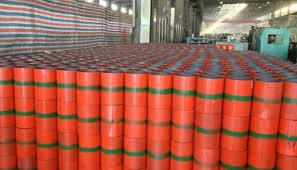- Afrikaans
- Albanian
- Amharic
- Arabic
- Armenian
- Azerbaijani
- Basque
- Belarusian
- Bengali
- Bosnian
- Bulgarian
- Catalan
- Cebuano
- Corsican
- Croatian
- Czech
- Danish
- Dutch
- English
- Esperanto
- Estonian
- Finnish
- French
- Frisian
- Galician
- Georgian
- German
- Greek
- Gujarati
- Haitian Creole
- hausa
- hawaiian
- Hebrew
- Hindi
- Miao
- Hungarian
- Icelandic
- igbo
- Indonesian
- irish
- Italian
- Japanese
- Javanese
- Kannada
- kazakh
- Khmer
- Rwandese
- Korean
- Kurdish
- Kyrgyz
- Lao
- Latin
- Latvian
- Lithuanian
- Luxembourgish
- Macedonian
- Malgashi
- Malay
- Malayalam
- Maltese
- Maori
- Marathi
- Mongolian
- Myanmar
- Nepali
- Norwegian
- Norwegian
- Occitan
- Pashto
- Persian
- Polish
- Portuguese
- Punjabi
- Romanian
- Russian
- Samoan
- Scottish Gaelic
- Serbian
- Sesotho
- Shona
- Sindhi
- Sinhala
- Slovak
- Slovenian
- Somali
- Spanish
- Sundanese
- Swahili
- Swedish
- Tagalog
- Tajik
- Tamil
- Tatar
- Telugu
- Thai
- Turkish
- Turkmen
- Ukrainian
- Urdu
- Uighur
- Uzbek
- Vietnamese
- Welsh
- Bantu
- Yiddish
- Yoruba
- Zulu
Brass Pipe Connector for Secure and Efficient Plumbing Applications
Understanding Brass Pipe Couplings A Comprehensive Guide
Brass pipe couplings are essential components in plumbing and piping systems that facilitate the connection of two pipes or tubes. Known for their durability and resistance to corrosion, brass fittings have been widely used in various applications, from residential plumbing to industrial piping systems. This article will explore the different types, advantages, and applications of brass pipe couplings.
What Are Brass Pipe Couplings?
Brass pipe couplings are fittings that connect two pieces of pipe or tubing, allowing for a secure and tight seal. They can come in various forms, including straight couplings, reducing couplings, and threaded couplings. Depending on the specific application, a coupling may feature male threads, female threads, or no threads at all, allowing for versatility in applications.
The most common type of coupling is the straight coupling, which allows for the extension of a pipe. Reducing couplings are designed to connect pipes of different diameters, which can be crucial when transitioning to smaller or larger pipes without encountering flow restrictions. Threaded couplings utilize male and female threads for easy connection and disconnection, making maintenance and repairs more efficient.
Advantages of Brass Pipe Couplings
One of the primary advantages of brass pipe couplings is their resistance to corrosion. Unlike steel or iron fittings, brass does not rust or corrode when exposed to moisture, making it ideal for plumbing applications that involve water or vapors. This resistance also extends the lifespan of the fittings, reducing the frequency of replacements and maintenance.
Brass is a strong and durable material, which means that brass couplings can withstand high pressure and temperature variations without compromising their integrity. This property makes them suitable for various applications, including heating systems, oil and gas pipelines, and chemical processing systems.
brass pipe coupling

Additionally, the ease of installation is another advantage of brass pipe couplings. Most brass fittings can be installed using standard plumbing tools, and their reliability in creating a secure seal helps prevent leaks. This user-friendly feature is particularly beneficial for DIY enthusiasts and professional plumbers alike.
Applications of Brass Pipe Couplings
Brass pipe couplings are utilized in numerous industries due to their versatility. In residential applications, they are commonly used in water supply lines, drainage systems, and heating systems. The plumbing industry favors brass fittings for their ability to handle pressure and their long-lasting nature.
In addition to plumbing, brass couplings are widely used in HVAC (Heating, Ventilation, and Air Conditioning) systems. They're utilized to connect various components such as coils, compressors, and condensers, ensuring efficient operation and air flow throughout the system.
Furthermore, the oil and gas industry relies on brass couplings for various applications, including fuel lines and gas pipelines. The corrosion-resistant properties of brass make it suitable for environments where harsh substances are present.
Conclusion
In summary, brass pipe couplings play a vital role in plumbing and industrial piping systems. Their durability, corrosion resistance, and versatility make them a preferred choice for many applications. Whether you are a professional plumber or a DIY homeowner, understanding the benefits and uses of brass couplings can aid in making informed decisions when it comes to plumbing projects. As technologies and materials continue to evolve, brass fittings remain a trusted option for reliable plumbing solutions.
-
Tubing Pup Joints: Essential Components for Oil and Gas OperationsNewsJul.10,2025
-
Pup Joints: Essential Components for Reliable Drilling OperationsNewsJul.10,2025
-
Pipe Couplings: Connecting Your World EfficientlyNewsJul.10,2025
-
Mastering Oilfield Operations with Quality Tubing and CasingNewsJul.10,2025
-
High-Quality Casing Couplings for Every NeedNewsJul.10,2025
-
Boost Your Drilling Efficiency with Premium Crossover Tools & Seating NipplesNewsJul.10,2025







